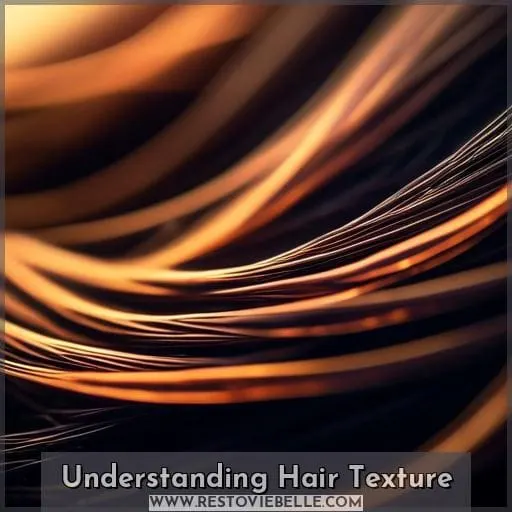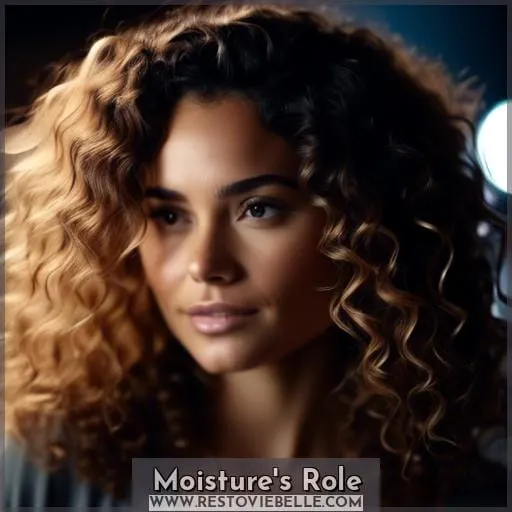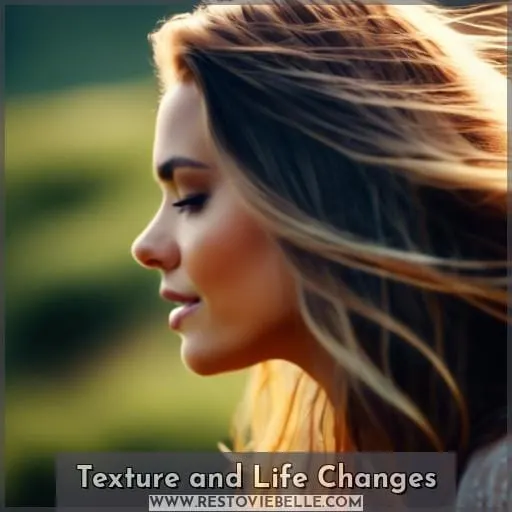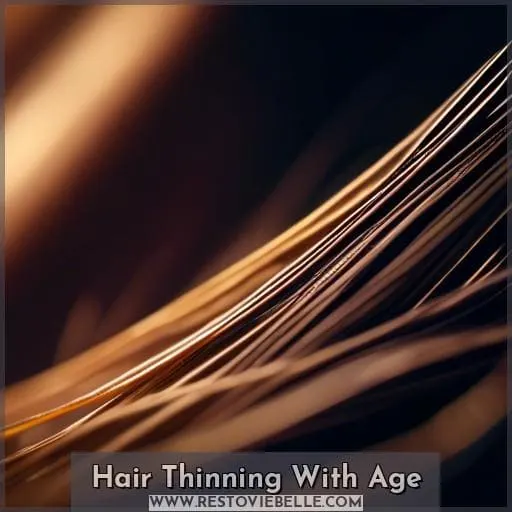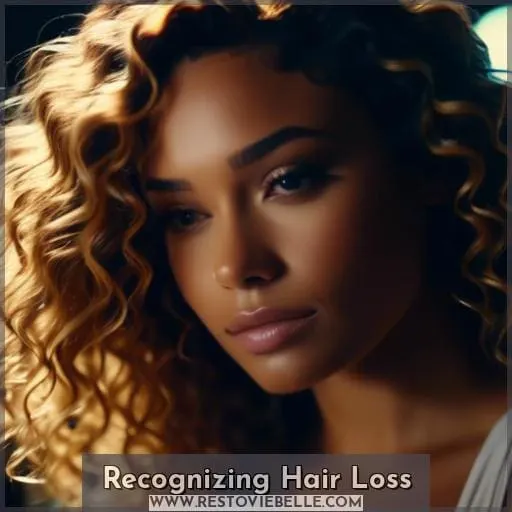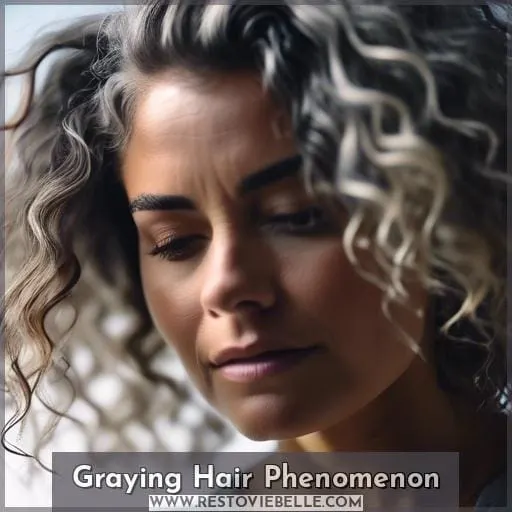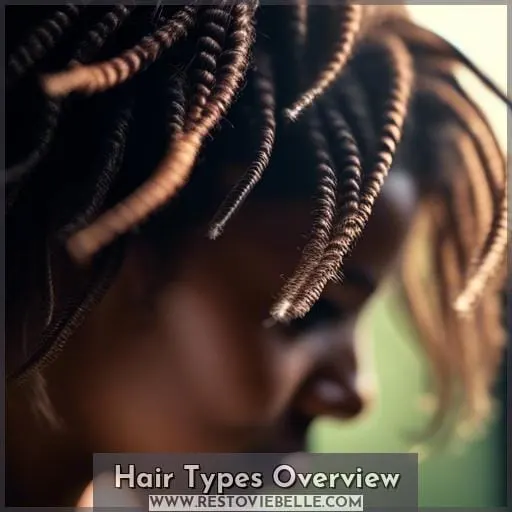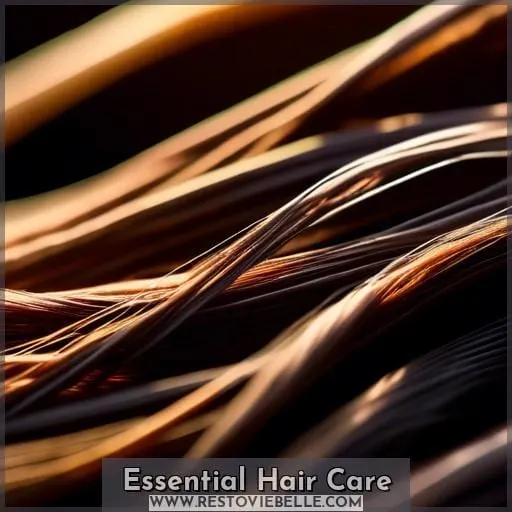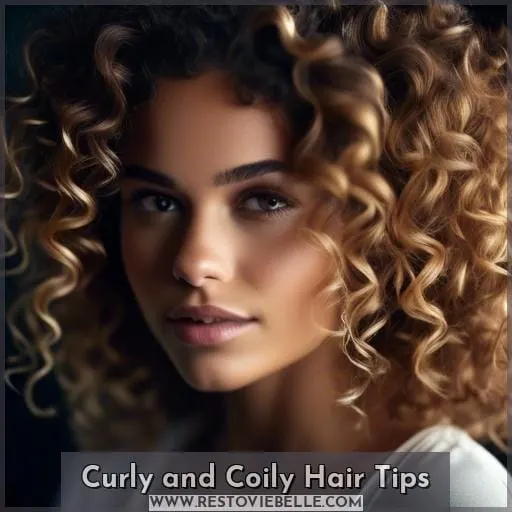This site is supported by our readers. We may earn a commission, at no cost to you, if you purchase through links.
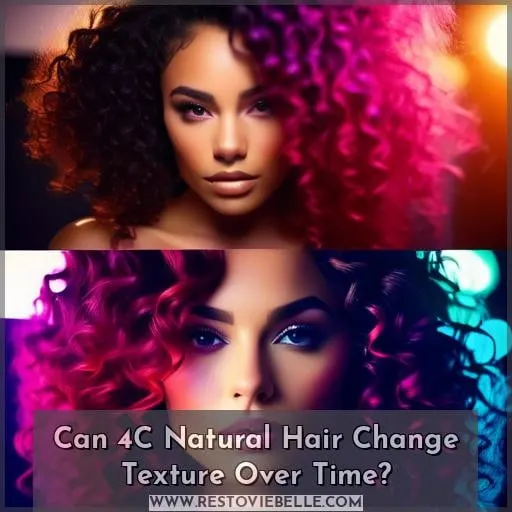 Just as the seasons transform the landscape, your 4C natural hair may evolve over time.
Just as the seasons transform the landscape, your 4C natural hair may evolve over time.
You might notice shifts in texture due to life’s changes—hormones, age, or health can all play a part.
Embrace this journey of discovery, learning to nurture and adapt to your hair’s unique rhythm.
With the right knowledge and care, you can maintain its health and celebrate its versatility, ensuring your curls continue to reflect your personal story of growth and change.
Yes, 4C natural hair can change texture over time due to factors like age, hormones, health, and hair care practices.
Table Of Contents
- Key Takeaways
- Understanding Hair Texture
- Moisture’s Role
- Texture and Life Changes
- Hair Thinning With Age
- Recognizing Hair Loss
- Graying Hair Phenomenon
- Hair Types Overview
- Essential Hair Care
- Managing Straight and Wavy Hair
- Curly and Coily Hair Tips
- Frequently Asked Questions (FAQs)
- How do environmental factors like climate and water quality affect the texture of 4C natural hair?
- Can transitioning from chemically treated hair to natural hair permanently alter the original curl pattern of 4C hair?
- How does the frequency of trimming or cutting 4C hair influence its texture and health over time?
- In what ways do protective hairstyles contribute to the maintenance or change in texture of 4C natural hair?
- What role does sleep and the materials used for pillows and head coverings play in the preservation or alteration of 4C hair texture?
- Conclusion
Key Takeaways
- Hair texture can change over time due to factors such as age, hormones, health conditions, and hair care practices, with proper moisture being key to enhancing curl patterns and revealing the hair’s true texture.
- Hormonal fluctuations during life events like puberty, medication use, and aging can significantly alter hair texture, leading to changes in appearance and feel, and in some cases, hair thinning or alopecia.
- Graying hair, a natural part of aging, involves melanin loss, which can change the physical properties of hair strands, often resulting in coarser and more wiry hair that may require different styling approaches.
- Avoiding harmful ingredients in hair care products is crucial for maintaining healthy curls, especially for fragile hair types like 4C, which is characterized by tight coils and requires extra care to prevent breakage and maintain moisture.
Understanding Hair Texture
You might’ve started your natural hair journey thinking you’d have 4C hair, but it’s not uncommon to see changes in your hair texture over time.
As you learn more about natural hair care and observe your hair’s growth, you may notice your curl pattern becoming more defined.
It’s important to embrace these changes and understand that hair can evolve due to a variety of factors, including proper moisture, life experiences, and hormonal shifts.
Hair Type Misidentification
Why might you have initially misidentified your 4C hair type? It’s common as you embark on your self-discovery journey. Perception shifts and texture evolution can be subtle, leading to growth revelations that redefine your hair identity.
- Limited exposure to varied 4C textures may have skewed your initial assessment.
- Hair loss or the onset of gray hair can alter the texture, making it appear different.
- Hair thinning over time might’ve contributed to a change in how your curls present themselves, prompting a reassessment of your hair type.
Education and Hair Growth
While you may have initially thought your hair was 4C, as you’ve educated yourself and allowed your hair to grow, you’ve likely noticed changes in your curl pattern. This learning curve is part of your growth journey, where knowledge acquisition plays a crucial role.
Understanding the impact of proper 4C hair care and recognizing developmental changes can significantly influence your hair’s texture and density.
As you delve deeper into the nuances of hair growth, you’ll see how education shapes your approach, potentially leading to a transformation in what you once believed was unchangeable.
Moisture’s Role
You may have noticed that the moisture level in your hair plays a significant role in enhancing your natural curl patterns. By ensuring proper moisture, you can optimize your hair’s potential and reveal its true texture.
It’s important to be mindful of the ingredients in the products you use, as bad ingredients can suffocate and strip your hair of its much-needed moisture, affecting its texture and manageability.
Enhancing Curl Patterns
Every strand of your hair can reveal its true curl pattern when you properly moisturize it. Hydration techniques are key to curl pattern revival, especially for 4C hair, which thrives on moisture retention.
By enhancing curl patterns through consistent moisturizing, you encourage hair definition and a curl transformation that reflects your hair’s natural beauty.
Avoiding Bad Ingredients
Following the discussion on enhancing curl patterns, it’s crucial you’re aware that not all ingredients in hair care products are beneficial for your curls. Ingredient awareness is key in product selection, especially for maintaining the moisture importance in 3c and other curly hair types.
Some ingredients can have negative health implications, stripping your hair of its natural oils. Opting for natural alternatives in your conditioner and other hair care essentials can safeguard your curls’ health.
This approach not only supports your hair styling efforts but also promotes the overall well-being of your curly hair.
Texture and Life Changes
As you navigate through different stages of life, your 4C hair may exhibit changes in texture due to factors like puberty and hormonal fluctuations.
Medications, including birth control, can also influence your hair’s characteristics, altering its natural curl pattern.
It’s important to recognize and adapt to these changes, as they’re a normal part of your hair’s evolution.
Puberty and Hormones
You’ll notice your hair’s texture can significantly change during puberty and other hormonal shifts, affecting its appearance and feel. Hormonal fluctuations and adolescent changes can lead to growth influences that alter your coily hair’s pattern.
- Hormone therapy and body transitions may impact hair texture, sometimes observed through the braid and curl method.
- The flat twist method and shingling method can help manage new textures.
- Bantu knots are a go-to style that works well with various textures, embracing your hair’s evolution.
Medication Effects
Transitioning from the impact of puberty and hormones on hair texture, it’s important to consider how medication can also play a significant role in altering one’s hair characteristics. Medications, particularly those falling into specific classes such as antineoplastic agents, antiepileptics, retinoids, immunodulators, and HIV antiretroviral therapy, have been linked to changes in hair texture, including making hair curlier or altering its pattern.
This phenomenon, while not as widely discussed or researched as medication-induced hair loss, highlights the complex interplay between health interventions and physical appearance, underscoring the need for awareness and open dialogue about potential side effects.
| Medication Class | Potential Hair Impact |
|---|---|
| Antineoplastic | May induce curliness |
| Antiepileptics | Can alter hair pattern |
| Retinoids | Leads to texture change |
| Immunomodulators | Possible curl enhancement |
| HIV Therapy | Might modify hair texture |
Hair Thinning With Age
As you age, changes in the anagen phase of hair growth can lead to a decrease in hair density and a duller, thinner texture. Additionally, the decline in sebum production contributes to increased hair dryness.
External factors such as inflammation, UV light, smoking, genetics, and oxidative stress can also accelerate hair thinning.
Anagen Phase Changes
As you age, you’ll notice changes in your hair due to alterations in the anagen phase, which is part of the natural aging process.
- Shortened hair growth cycles, reducing the time your hair spends growing
- Decreased hair follicle activity, which can result in thinner strands
- Variations in anagen phase length, causing a decline in overall hair density
Understanding these growth phase variations helps you adapt your hair care routine to maintain your hair’s health and embrace its evolving texture.
Sebum Production Decline
How might the decline in sebum production as you age contribute to the thinning of your hair? As you get older, hormonal influences and age-related changes can lead to a decrease in sebum production. This natural oil is crucial for maintaining skin health and a well-nourished scalp.
Without adequate sebum, your hair may become drier, more brittle, and appear thinner.
| Age-Related Change | Impact on Hair | Scalp Care Importance |
|---|---|---|
| Reduced Sebum | Drier Hair | Essential for Health |
| Hormonal Shifts | Thinning Hair | Nourishment Needed |
| Aging Skin | Less Protection | Vital for Scalp Health |
| Decreased Oil | Brittle Strands | Increases Hair Vitality |
Recognizing Hair Loss
As you observe your 4C hair over time, it’s important to distinguish between natural texture changes and potential hair loss.
Daily shedding of 50-100 hairs is normal.
But a noticeable decrease in overall hair density could indicate alopecia.
Being aware of these signs can help you address any underlying issues early on.
Alopecia Types
You’ll find that alopecia, a common cause of hair loss, manifests in various forms, impacting individuals differently as they age. Whether it’s alopecia areata, which can cause patchy hair loss, or androgenetic alopecia, leading to a more diffuse thinning, understanding your condition is crucial.
Exploring alopecia treatments can offer hope. From topical solutions like minoxidil that promote hair regrowth to more advanced options such as hair transplantation, there’s a range of strategies to improve scalp health and encourage hair restoration.
Daily Hair Shedding
When examining daily hair shedding, it’s important to recognize that shedding up to 100 hairs a day is considered normal. This natural process is crucial for maintaining scalp health and making room for new hair growth.
By adopting gentle styling techniques and protective hairstyles, you can minimize unnecessary stress on your hair.
Embrace this cycle as part of your journey to understanding and loving your natural hair.
Graying Hair Phenomenon
As your hair transitions to gray, you might notice not just a change in color but also in texture.
The loss of melanin, which gives your hair its color, can alter the physical properties of your strands, making them feel different from your pigmented hair.
This shift can be more pronounced if you had highly pigmented hair to begin with, leading to adjustments in how you care for and style your hair.
Melanin Loss
As one transitions from discussing hair loss, it’s important to note that another significant change affecting hair over time is the loss of melanin, leading to graying hair. This phenomenon, known as canities or achromotrichia, occurs as part of the natural aging process.
The age at which it happens can vary significantly among different races. Your hair’s ability to fend off graying may be influenced by pigmentation genetics, which determine melanin production.
Dietary influences and environmental factors, including skin protection and UV resistance, also play roles in when and how your hair may transition to gray.
Texture Changes in Gray Hair
As we age, you might find that your once vibrant hair begins to lose its pigment, resulting in gray strands that often feel coarser and more wiry than your younger tresses.
This pigment loss isn’t just a matter of genetics; environmental influences play a significant role too.
Adapting your styling options becomes essential as the texture changes.
Understanding this transformation can alleviate the psychological impact, helping you embrace the new phase of your hair journey.
Hair Types Overview
Understanding your hair type is crucial for proper care and styling.
If you’ve always thought your hair was type 4C but are noticing changes, it’s important to recognize that hair types range from straight (Type 1) to coily (Type 4), with variations in curl pattern within each category.
These changes can be due to a variety of factors, including hormonal shifts, health changes, or even how you care for and style your hair.
Embracing these changes and learning more about your hair’s needs can lead to healthier, more vibrant hair.
Type 1 Straight Hair
Type 1 straight hair, you’ll find, is naturally sleek and has the ability to reflect shine due to the ease with which scalp oils travel down the hair shaft.
- Straight Hair Styling: Embrace sleek finishes with minimal product.
- Heat Damage Prevention: Use protectants for healthy locks.
- Natural Shine: Celebrate its luminosity.
- Volume Techniques: Lift at the roots for dynamic body.
Type 2 Wavy Hair
While many individuals with Type 1 hair experience minimal natural curl, you might find your wavy strands forming more pronounced ‘S’ shapes, especially if you have Type 2 hair.
Embrace wavy hair maintenance to enhance curl definition. Styling techniques and heat protection are key, as humidity effects can alter your waves’ shape.
Type 3 Curly Hair
Although your wavy hair may have subtle curls, if you’re noticing more defined S-shaped loops, you might actually have type 3 curly hair.
To maintain your curl pattern, try finger coiling or twist-outs.
Use moisturizing shampoos and conditioners, and opt for protective hairstyles to prevent heat damage.
Embracing your natural curls can be liberating and empowering.
Type 4 Coily Hair
Regarding type 4 coily hair, you’ll find it’s the most fragile of the hair types, often requiring extra care to prevent breakage and maintain moisture.
Embrace curl evolution and growth patterns with tailored styling techniques.
Heed maintenance tips and opt for protective styles to nurture your hair’s unique character.
Essential Hair Care
When caring for 4C natural hair, it’s essential to select the right shampoo and conditioner to maintain moisture and prevent breakage.
If you’re experiencing thinning hair, Minoxidil, commonly known as Rogaine, may help by increasing hair diameter and promoting growth.
Shampoo and Conditioner Use
Shampoo and conditioner choices are crucial for maintaining the health and appearance of your 4C hair.
- pH Balance: Look for products that maintain the natural pH balance of your hair and scalp, promoting overall scalp health and preventing dryness or irritation.
- Deep Conditioning and Protein Treatments: Regular deep conditioning keeps your hair moisturized, while occasional protein treatments strengthen your hair, preventing breakage.
- Co-washing Benefits: Incorporating co-washing into your routine can help retain natural oils, enhancing moisture and softness without stripping your hair.
By focusing on these aspects, you’ll support your hair’s health, encouraging its best texture and appearance.
Minoxidil for Thinning Hair
As we explore options for managing thinning hair, it’s important to consider how minoxidil can help you regain fuller locks. This treatment is known for its ability to stimulate growth and improve scalp health.
However, being aware of potential side effects is crucial. Proper application techniques can maximize its long-term efficacy, ensuring you feel a sense of belonging to your rejuvenated hair.
| Aspect | Detail |
|---|---|
| Scalp Health | Enhances follicle environment |
| Side Effects | Possible irritation |
| Growth Stimulation | Encourages hair regrowth |
| Application Techniques | Ensures effective use |
Managing Straight and Wavy Hair
When managing straight and wavy hair, it’s important to avoid heavy products that can weigh down your locks.
Opt for gentle drying techniques, like patting your hair dry with a towel or using a diffuser on a low heat setting to maintain your hair’s natural texture.
Avoiding Heavy Products
While many shampoos and conditioners are essential for keeping your hair nourished, if you have straight or wavy hair, you’ll want to steer clear of heavy products that can weigh it down. Opt for lightweight formulas that respect your hair porosity and don’t smother your strands.
These allow your natural oils to maintain a healthy shine and protein balance. They also contribute to better curl definition without the burden of excess residue. Remember, the right product can enhance your hair’s natural movement and texture, giving you that sought-after freedom and effortless style.
Gentle Drying Techniques
Gently patting your hair dry with a soft towel helps prevent damage and maintain the natural texture of straight and wavy hair types. After washing, consider wrapping your hair in a towel turban to absorb excess water without harsh rubbing.
For those who prefer quicker drying, using a blow dryer with a diffuser on a low heat setting can protect your strands. Always apply a heat protection product before blow drying to shield your hair from damage.
Embracing air drying as much as possible not only preserves your hair’s health but also encourages its natural beauty to shine through.
Curly and Coily Hair Tips
For those with 4C natural hair, understanding the right care techniques is crucial for maintaining healthy, vibrant curls.
Specialized shampoos and conditioners designed for coily hair types can make a significant difference in managing your hair’s unique needs.
Moisturizing is key to keeping your curls defined and preventing breakage, while gentle detangling prevents damage and helps your hair maintain its natural texture.
By incorporating these practices into your routine, you can embrace and enhance the natural beauty of your 4C hair.
Specialized Shampoo and Conditioner
In continuation from the discussion on managing straight and wavy hair, you’ll find that specialized shampoos and conditioners are essential for maintaining the health and definition of curly and coily hair textures.
- Custom Formulations: Seek products tailored to enhance hydration techniques, ensuring your curls stay quenched and resilient.
- Protein Balance: Use conditioners that help maintain protein balance, vital for your hair’s elasticity and strength.
- pH Balancing: Opt for pH-balanced hair care to promote scalp health and prevent frizz, keeping your natural texture defined and vibrant.
Moisturizing and Detangling
Following the discussion on the importance of using specialized shampoo and conditioner for curly and coily hair, it’s crucial to emphasize that moisturizing and detangling are key steps in maintaining the health and appearance of your curls.
Hydration benefits your hair by enhancing its elasticity, reducing breakage. Detangling techniques, when done gently, protect your strands from damage. Selecting the right products ensures your hair remains nourished without being weighed down.
Protective styling aids in minimizing manipulation, promoting growth retention. Embrace these practices for thriving curls.
| Aspect | Importance |
|---|---|
| Hydration Benefits | Enhances elasticity, reduces breakage, and maintains health. |
| Detangling Techniques | Protects strands from damage, promotes ease of styling. |
| Product Selection | Ensures nourishment without heaviness, tailors to specific hair needs. |
| Protective Styling | Minimizes manipulation, aids in growth retention, and prevents damage. |
| Growth Retention | Encouraged by all the above practices, leading to longer, healthier hair. |
Frequently Asked Questions (FAQs)
How do environmental factors like climate and water quality affect the texture of 4C natural hair?
Climate and water quality significantly impact 4C hair’s texture. Dry climates can strip moisture, causing frizz and brittleness, while humid environments may lead to excess moisture and frizz.
Hard water can also reduce hair’s elasticity and strength.
Can transitioning from chemically treated hair to natural hair permanently alter the original curl pattern of 4C hair?
Transitioning from chemically treated to natural hair can be like a phoenix rising. It may not restore your original 4C pattern, but it reveals a new, authentic texture to embrace and love.
How does the frequency of trimming or cutting 4C hair influence its texture and health over time?
Trimming your 4C hair every 6-8 weeks promotes health and prevents split ends.
It also supports length retention, enhancing your hair’s overall texture and vitality.
In what ways do protective hairstyles contribute to the maintenance or change in texture of 4C natural hair?
In the tapestry of life, your 4C curls are threads of resilience, weaving through seasons of change.
Protective hairstyles, like the intricate patterns of braids or the snug embrace of twists, serve as guardians of your hair’s legacy. They shield your strands from the harsh elements and the wear of daily manipulation, allowing each coil to rest and rejuvenate.
This nurturing cocoon promotes growth, preserving the health of your hair as it flourishes in its natural beauty.
Embrace these styles as both armor and ornament, a testament to the enduring strength and versatility of your curls.
What role does sleep and the materials used for pillows and head coverings play in the preservation or alteration of 4C hair texture?
Silk pillowcases and head coverings reduce friction.
This preservation of your 4C hair’s moisture prevents breakage.
For healthier, more resilient strands.
Conclusion
Time’s tapestry weaves changes into every strand of life, including your 4C natural hair. Embrace the evolution, knowing that texture may shift with hormonal tides, age’s progression, or health’s ebb and flow.
Nourish your curls with moisture, avoid harmful ingredients, and adapt your care routine to maintain their health.
Whether facing thinning locks or graying waves, remember: your hair’s story is uniquely yours, a reflection of a life richly lived and lovingly cared for.
